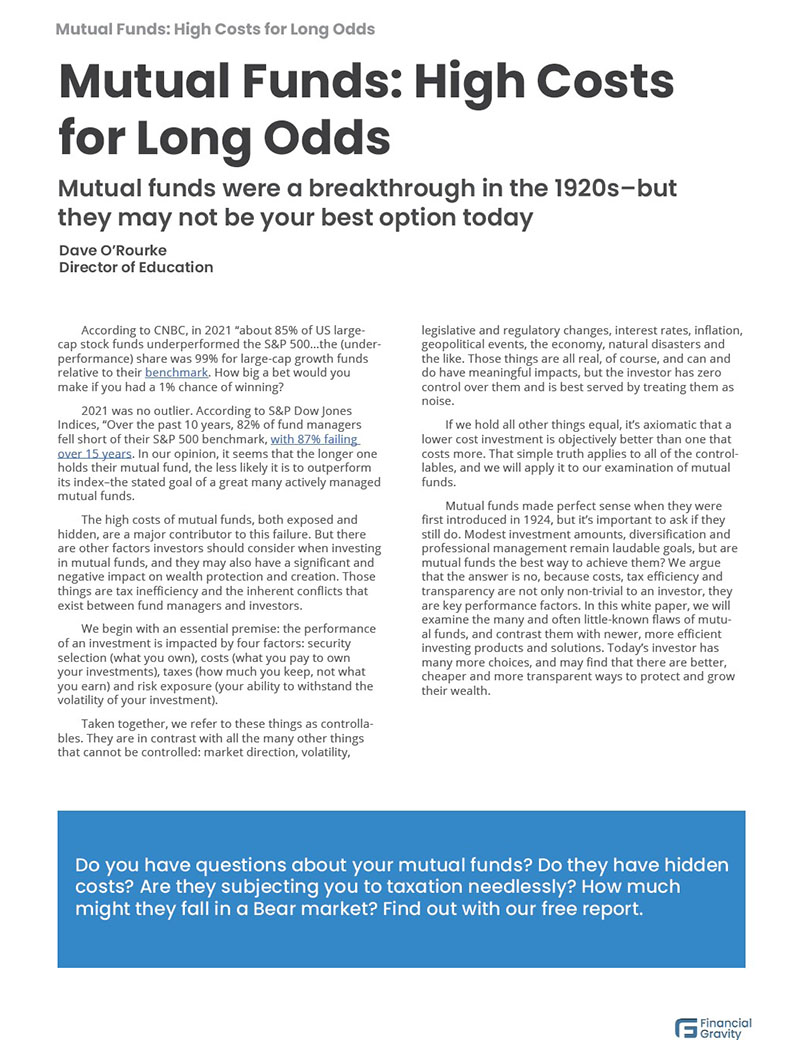T.S. Eliot’s epic poem The Wasteland opens with the famous line, “April is the cruelest month.” Although not actually true, investors have long believed that October is the cruelest month. That distinction belongs to September, which has fallen 0.6% on average in the 79 Septembers since 1945. In that period, October has actually been up 0.9% on average[1].
October earned its dark reputation largely because of two massive events: Black Tuesday through Black Thursday in 1929 and Black Monday in 1987. Those were spectacular happenings, to be sure, as both crashes saw about 25% of the market’s value disappear very quickly. Many Boomers can tell you where they were on October 19th of ‘87 when they got the news.
The S&P 500 has been quietly putting together a decent year for itself. As of October 11th, 2023, the average is up 13.21% year-to-date and 21.52% for one year. This is despite the war in Ukraine and the new troubles in the Middle East, persistent high inflation, rising interest rates, oil near $90 per barrel, and soaring government deficits. If proof were needed, 2023 has demonstrated that predicting the stock market is virtually impossible.
Economists have struggled for decades to understand the movement of asset prices, and while a number of Nobel Prizes have been awarded in the study area, there has never been a reliable way to predict the future accurately. About the best planning tool we have was developed in the late 1880s by the English statistician Francis Galton.
Galton determined that the children of tall fathers tended to be shorter than their fathers, a phenomenon that he called “reversion to the mean.” Wall Streeters refer to “mean reversion” when they forecast that a diversified portfolio of stocks will be expected to return 10% over the long haul. In fact, since 1928, the S&P has finished a year anywhere between 9% and 11% only three times.
The definition of “long haul” is going to vary among investors and planners. If the long haul is 10 years, then there have only been two decades in which stocks were down: the 1930s and the 2000s. However, there has never been a 20-year down period since 1926, although 20-year returns vary widely, from as low as 2% all the way up to 18%.
Mean reversion gains some credibility when you consider this: 90% of 20-year periods have enjoyed a return of 7% or higher, and 56% of 20-year periods have seen returns above 10%[2].. So, it would seem reasonable to expect decent returns if you’re patient and totally unreasonable to predict what any given year may mean for stocks.
Unfortunately, most people are not patient and find the volatility too much to handle. Selling stocks when they’re down and buying them back when they’ve recovered has led to perennial underperformance by American equity fund investors since the data have been compiled.
Investing in stocks can be a great way to build wealth if you can do these things: ride out the corrections and bear markets, and put the focus not on what you earn but on what you keep.
A Few Simple Things You Can Do To Boost Your Portfolio Returns
There are proven strategies you can employ to make your money grow faster. All are easy to understand, and none involve increasing your portfolio risk level. You won’t need special knowledge or training—all you need is the resolve to take more control over your finances.
First, and perhaps most importantly, there is something you should not do: do not attempt to predict the stock market’s direction or volatility. If that could be reliably done, it would have been. Market timing is a proven killer.
Market timing is not the only return killer; there are other factors that can eat away at your gains, sometimes leading to results that barely move the needle. Those things are costs, taxes, and inflation. There’s nothing you can do about inflation, but there is a lot you can do about the other two.
To understand the impact of these things, let’s look at a quick example. Let’s say your stock portfolio returned 10% last year. Pretty good, right? That sounds like real money. However, let’s see what happens after brokers and product costs are factored in.
The Financial Gravity team has examined thousands of client portfolios and has observed that many investors have total costs in the 2% to 3% range. Many others have high turnover in their portfolios and don’t optimize asset location or harvest losses, meaning they needlessly overpay taxes. Realized short-term gains on stocks are taxed as ordinary income. So, let’s do the math.
We began the last year with a $100,000 portfolio, and it produced $10,000 in gains, leaving us with $110,000. However, we paid 2.5% in costs and 30% in state and federal taxes on the gains. And last year, the CPI was 5%. Keep in mind that the 2.5% in costs and the 5% inflation costs are applied to the entire portfolio, not just the gains.
Inflation has reduced the real value of the starting balance of $100,000 to $95,000, and the 2.5% in costs further reduces its value to $92,500. After the 37.5% haircut, the gains were reduced from $10,000 to $6,250, so the net real value of the account after a “successful” year is $98,750. You’re poorer in real terms than you were.
If you’ve been wondering why your account never seems to get anywhere, you may now have your answer. However, there is a lot you can do about it.
Step one would be to look at your costs. Your costs may be far higher than you realize, as many costs are hidden. Expense ratios, particularly on mutual funds, can be quite high, and so can sales charges on A, B, and C class shares. Then, there are planning, advisory, brokerage, and other fees. It’s not surprising that so many investors have total costs above 3% per year.
Step two would be to pay attention to your tax efficiency. By far, the biggest hit on your gains in the example above was taxes: six times the hit from inflation and twelve times the impact of costs. This explains why the wealthiest investors almost always have a tax professional on the investment management team.
Becoming more tax-efficient is not difficult and can be accomplished without a ton of effort. Make sure you put the right kinds of assets in the most appropriate accounts. For example, muni bonds should be in taxable accounts, and bonds and dividend payers should be in your retirement account. Second, adopt a low turnover strategy, aiming for long-term gains. Third, harvest losses when you can to offset future realized gains.
Taken together, these simple strategies can greatly reduce tax drag. If costs can be knocked down to 1.5% and taxes to 10%, the $10,000 gain you enjoyed would have had a net, real value of $8,350, 33.6% more than in our example above. Your total account would have actually grown in real terms. Not by much because inflation was so high, but at least progress was made.
Reducing costs and avoiding unnecessary taxes are within your control, unlike the market’s moves and inflation. Those kinds of portfolio efficiencies are a routine goal of wealthy investors, but anyone could benefit from following their example.
Mutual Funds Are a Downer in All Market Conditions
One easy way to lower costs and become more tax-efficient is to trade in your mutual funds for ETFs or SMAs. An ETF is an exchange-traded fund and will generally have very low costs, sometimes below five basis points (1/20th of 1%). ETFs also avoid the fatal flaw of mutual funds, which is their annual distribution of gains and losses to investors, regardless of whether or not the fund made any money.
An SMA, or separately managed account, is very flexible when it comes to tax-aware investing. Each stock can go in the most appropriate account type, losses can be harvested, objectionable companies may be avoided, and holdings can grow without taxation until sold. If held until death, they can even pass to heirs with no tax at all on the gains.
SMAs can be more expensive, but they can also produce above-market returns. Investors seeking higher returns should examine SMAs before buying mutual funds, because the fund’s inherently higher costs are a key cause of their traditional underperformance versus index funds.
The high, often hidden costs of mutual funds, combined with their built-in tax inefficiency and their historical tendency to underperform, make them problematic in up, down, and flat markets. For these reasons, family offices and wealth investors tend to eschew mutual funds. We suggest that may be a good example for everyone to follow.
October has not been a consistently bad month for investors, and if you take the actions we’ve outlined above, you may find that April, which is tax time, may become a lot less cruel.
If you’re interested in learning more about the problems with mutual funds, you can download this white paper, Mutual Funds: High Costs for Long Odds. We believe you’ll be well served to learn more.
Sources:
[1] reuters.com


